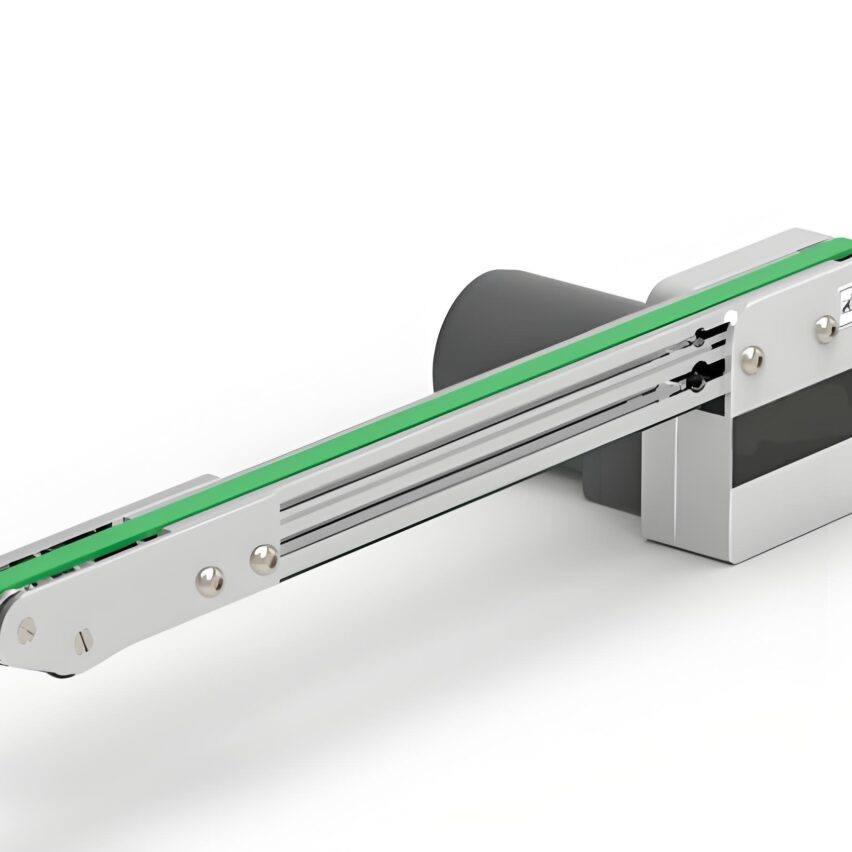Welding workshop sparks, master Lao Li stared at the stuck conveyor chain straight stomp: "This broken chain and stopped! Today's third car missed work!" --The traditional conveyor line stuck neck is the epitome of the black hole of efficiency in the automobile factory. And the following three plant transformation story, with innovative conveying solutions to tear open the efficiency of 30% gap.
Scenario 1: Body-in-White Handling Dilemma → Robot "replacing line with car".
trouble spot
In a new energy plant welding workshop, the traditional skid conveyor line covers an area of thousands of square metres, and it takes 2 days to disassemble and assemble the new model. Every time the production line is switched, the workers will be drilling the equipment and adjusting the track, and they will miss 8 hours of work on average per day.
exit programme
▶AGV Flexible Handling: Deployment of 20 laser SLAM-guided robots, which autonomously travel between workstations with white bodies.
▶Magnetic spike track + 360° rotating table: Multi-side welding of the bodywork without manual turning
▶digital twin preview: 5-minute cloud deployment for new model paths, say goodbye to physical transformation
Efficiency Blitz
| norm | pre-conversion | after conversion | Enhancement |
|---|---|---|---|
| Retrofit time | 48 hours | 2 hours | ↓96% |
| Capacity per day | 90 units | 103 units | ↑14.4% |
| Site utilisation | 1000 square metres | 600 square metres | ↑40% |
| The person in charge of the production line was still shaking his hands when he clapped his hands: "The robot is 30% more expensive than the conveyor line, but the space saved is enough to open two new lines!" |
Scene 2: chassis assembly life and death → AGV precision feeding
trouble spot
On the chassis line of a joint-venture car factory, workers run after the 2.5m/min conveyor chain to screw bolts. Old Zhang spat: "running half a second slower will miss the installation, rework 12 cars last month!"
Scalpel programme
▶Dual Lift AGV: Lift chassis and body air integration, eliminating conventional spreaders
▶Laser positioning + servo control: Positioning accuracy ±0.1mm, bolt hole 100% alignment
▶Smart MetronomeDynamic speed regulation according to the completion rate of the workstation, eliminating the "breathing effect" on the production line.
the facts speak for themselves
- Combined loading time for a single vehicle: 8.4 min →5.9 minutes(↓29.8%)
- Bolt leakage rate: 1.2% →0.05%(QC rips up rework orders overnight)
- Manpower: 6 →3 people(Saved man transferred for laser calibration)
The chief labourer made a wildly cursory endorsement on the acceptance sheet, "Should have thrown out that piece of crap friction line a long time ago!"
Scenario 3: Welding workshop oil hell → Friction conveyor line reversal
trouble spot
In the painting workshop of a car company in the north, the accumulation chain conveyor line leaked oil and polluted the car body. Each car had to be manually wiped of oil stains, and the average monthly compensation to customers was $3,000 for pollution.
The Technology Sword
▶Polyurethane Friction Wheel: Replacement of metal gears, oil-free and silent operation
▶Distributed Drive Station: 180w micro-motor start/stop on demand, power consumption down 67%
▶Dual mode track: Ground friction line for bodywork + air friction line for doors
nuclear explosion of costs
- Energy bill: 380,000 kWh of electricity per month →125,000 degrees
- Pollution compensation: 360,000 per year →zero(QC transferred to do process optimisation)
- Maintenance costs: average of 3 overhauls per week →1 quarterly spot check
The director of the production line pointed to the shiny white body and laughed and cursed: "If I had known that this thing wouldn't even touch oil stars, I should have put it on three years ago!"
The iron rule of selection through blood and tears
Veteran engineer who has worked on three production line modifications dumps his private notes:
make a copy of1. **Welding/painting session** → selective friction conveying line [1,4](@ref) - Ground friction for bodywork + air friction for small parts - Polyurethane friction wheels are a must! Oil and noise resistant 2. **General assembly chassis combination** → AGV dual lift system [5](@ref) - Positioning accuracy ±1mm is the bottom line - Always with dynamic speed control 3. **Over 200,000 annual production** → Abandonment of the accumulation chain [9](@ref) - Direct pass for noise >85dB - Friction line / speed chain either way 4. **Mixed line production just required** → Robotic Flex Line [3](@ref) - SLAM navigation is just what's needed - Reserve 20% path redundancyLast shot at the blackboard.Don't be "imported top conveyor line" brainwashing! A factory smashed ten million to introduce the German roller bed line, the results of the local tray is not compatible, stop production for three months and other accessories--!Scenario-appropriate delivery solutions are real money productivity weapons.













